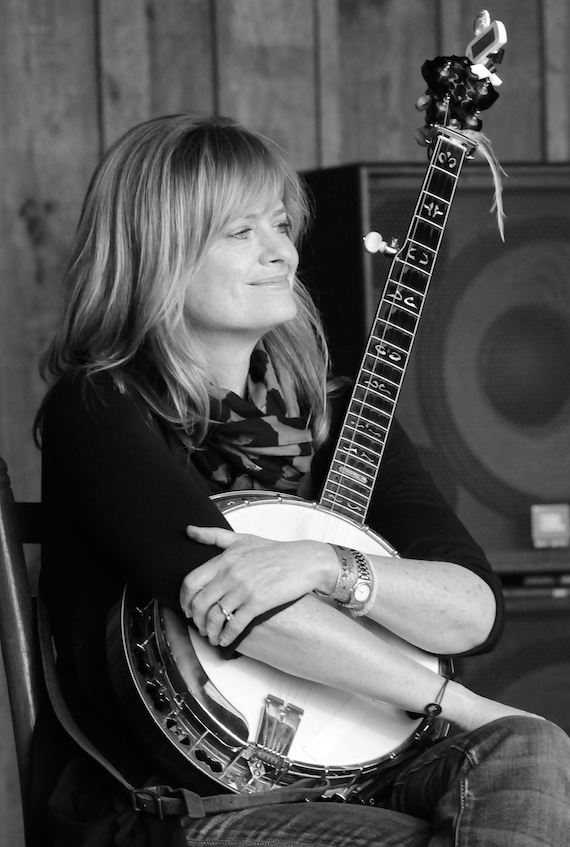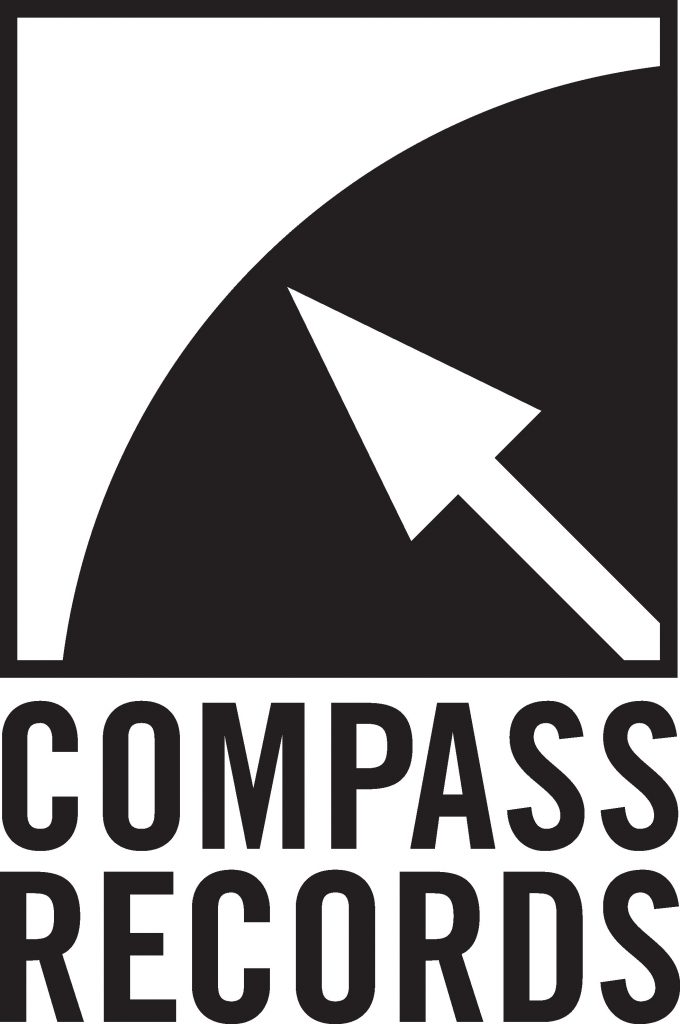

Alison Brown. Photo: Jim Gavenus
Alison Brown and Garry West were at a bar in Stockholm, Sweden, on break while serving as bandleader and bassist for Michelle Shocked when they began dreaming of creating a record label where musicians helped to promote the work of other talented musicians.
“I love being on the road, but there is a lot of downtime. That’s when we started to brainstorm,” Brown tells MusicRow. “We did the proverbial napkin sketch of a wheel with various spokes, with a vision of how would you achieve this life in music? By having the label and studio and touring and different assets. We launched the label at the end of that tour.”
The label Brown and West launched in 1995 is Compass Records. Over the past two decades, the label has promoted an array of bluegrass, Americana, Celtic, folk, Cajun and jazz releases from artists like A.J. Croce, Beth Nielsen Chapman, Dale Ann Bradley, Mike Farris, Larry Stephenson, Colin Hay, Michael Cleveland and Flamekeeper, The Infamous Stringdusters, Rob Ickes & Trey Hensley, as well as from Brown herself.
In 2004, Compass Records set up shop on 19th avenue in Nashville, in the former home of Tompall Glaser’s Hillbilly Central, which included an office downstairs and recording space upstairs. In the 1970s, Hillbilly Central boasted a creative output including John Hartford’s innovative 1971 album Aereo-Plain, Waylon Jennings’ classic Dreaming My Dreams, and country music’s first platinum album Wanted: The Outlaws.
“It wasn’t until after we bought the building that we learned that John, of whom I’m a huge fan as a banjo player, actually recorded Aereo-Plain here. That is one of the seminal records of early ‘newgrass’ music, and it was royalties from publishing ‘Gentle On My Mind’ that gave Glaser the opportunity to build the studio in the first place. So there is a really deep connection for us in this place that we didn’t realize at first. To have the studio upstairs and the staff downstairs, and see the synergy between those two things, created some unique opportunities for us as a company.”
 Growing up, Brown traveled in bluegrass bands in the San Diego area with fiddler Stuart Duncan. However, as a graduate of both Harvard and UCLA Business School, Brown’s post-college work centered on investment banking and public finance.
Growing up, Brown traveled in bluegrass bands in the San Diego area with fiddler Stuart Duncan. However, as a graduate of both Harvard and UCLA Business School, Brown’s post-college work centered on investment banking and public finance.
“I never really thought I would become a musician,” says Brown. “My mom and dad were both lawyers and they were hoping I would be a doctor. When that didn’t work out, I was a banker. I expected for banjo to be a hobby.” However, she quickly realized was happier doing music. “I would always think about how I could carve out just a moment to think about music,” says Brown.
So she took a six-month hiatus and her timing was impeccable. Alison Krauss called, in need of a banjo player for one weekend. That weekend turned into a three-year stint (1989 to 1991) and the launch of a new career. Brown would go on to release several albums under the Vanguard label before launching Compass.
In 2001, she won a Grammy for “Leaving Cottondale,” her collaboration with Bela Fleck from her album Fair Weather. In 2015, she was honored with a distinguished achievement honor for her banjo prowess from the IBMA.
She says her unique position of being an artist, a producer, and a label executive allows her to make better creative and business decisions both in the studio and at the label.
“I do think that for me, knowing the business side informs what I do in the studio. I think some artists go into the studio just thinking about their music, the songs they’ve written and getting them recorded and putting them out there. When I’m making my own records or producing other people’s records, I feel like I bring the perspective of where the market is right now, to design an outcome. Before you start, imagine yourself 12-18 months down the road. What do you want to say has happened with this record? Then let’s work backward to make sure it has the hook so we can get these things to happen. It’s a great perspective and it works for me.”
Brown has stayed dedicated to that vision of promoting other artists. Compass issued 25 albums before it released a project from Brown. “It has never been a vanity label,” she says. “We’ve released probably 600 albums, and maybe 10 have been mine.”
The latest from Brown, 2015’s The Song of the Banjo, explores the instrument’s possibilities when mixed with updated interpretations of pop classics. Her expert banjo picking carries the melody on a rendition of Cyndi Lauper’s “Time After Time,” while the project also features guests like Colin Hay, Keb Mo and The Indigo Girls.
“Unless you are a banjo fan already, it’s hard to listen to the instrument and know what is happening because of all these notes. If you don’t know the melody of the tune, it’s hard to figure out what is so cool about it. We figured if we played a tune people knew, like ‘Time After Time,’ it gave them something to latch on to. They had a way in. They could listen to the banjo playing a song they already knew and could connect to. That was a lot of the goal with that record.”
 The instrument has made a resurgence across the pop and rock spectrum in the past several years, with Elle King, Mumford & Sons, The Band Perry, The Avett Brothers, and Taylor Swift taking up the instrument.
The instrument has made a resurgence across the pop and rock spectrum in the past several years, with Elle King, Mumford & Sons, The Band Perry, The Avett Brothers, and Taylor Swift taking up the instrument.
“I think it is fantastic and long overdue, but if you think of it from a broad historical perspective, which is something I think about a lot, the banjo was the most popular instrument in America in the late 1800s. That’s what everybody played. Middle class parlors all had banjos in them. It was America’s instrument. In a sense, seeing it creep back into the mainstream is seeing it creeping back to where it was in the first place.”
She adds, “When I was working on Song of the Banjo, that was part of the statement I was trying to make. In the 1900s, the banjo got stereotyped in bluegrass music and all the possibly negative connotations some people might have about that music, which I don’t share at all obviously, but it got pigeonholed. But it was only 50 to 75 years before that nobody would have pigeonholed it that way.”
As music has shifted and evolved since Compass’ opening in 1995, so has the commercial space for marketing music. As CDs have been overpowered by streaming, the company has also adapted to the new demands of music marketing.
“The fragmentation of the marketing, it’s made it harder in some ways,” says Brown. “It used to be if we had an artist profiled on All Things Considered, we’d see 5,000 units shipped the next day on the back of that. Now, everything has less impact and there doesn’t seem to be the same silver bullet for delivering your message. So as a result, the artist has to be on their game with social media to deliver content and messaging on a daily basis to keep blowing wind into the sails. It’s great that those avenues for discovery exist, but it makes it more challenging to get your message heard.”
To that end, Brown relies on her Compass team of marketing and promotion aces, as well as each artist’s managers and agents to create a comprehensive strategy.
“One of the things we stress is that an artist’s infrastructure is incredibly important in helping us to be able to help that artist achieve success. Early on, in a much more open market, we put out some first records by some incredible artists. We were able to get them some exposure, but even back then, it worked better when the artist was moving as fast as the label. Anymore, that’s just completely essential.”

About the Author
Jessica Nicholson serves as the Managing Editor for MusicRow magazine. Her previous music journalism experience includes work with Country Weekly magazine and Contemporary Christian Music (CCM) magazine. She holds a BBA degree in Music Business and Marketing from Belmont University. She welcomes your feedback at jnicholson@musicrow.com.View Author Profile


